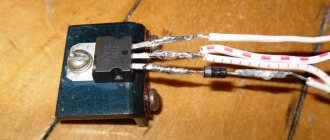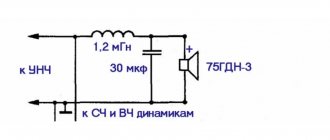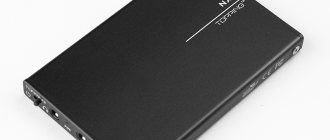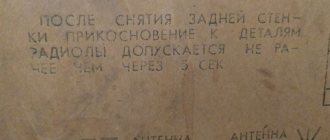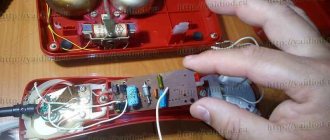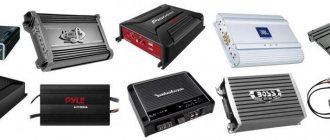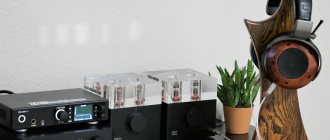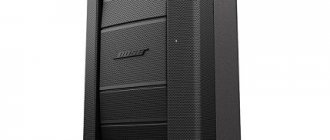The behavior of voltage in a household electrical network is unpredictable. There may be several reasons why the current parameters are outside the permissible deviations. Often these are short-term voltage drops and interference, and sometimes systematic violations of standard standards. The evening voltage in the network differs from the morning one due to the large number of connected devices. Connecting powerful construction or home equipment leads to impulse noise that interferes with the operation of audio and video equipment. The result of temporary and permanent voltage deviations from a sinusoid is deterioration in the quality of work and breakdown of home appliances. One way to avoid trouble is to connect electrical appliances through a surge protector (SF). In simple terms, a surge protector is an extension cord with a toggle switch and a built-in protection unit that provides passive filtering of the input voltage. Let's take a closer look at the design options of different models and the tasks they perform.
What does a surge protector do and what does it protect against?
Problems of the household electrical network that various models of surge protectors struggle with:
- Short circuit. Phase and zero are connected without load. This situation occurs when a wire breaks or a short circuit occurs in any device. In this case, the surge protector turns off all equipment.
- Interference. They arise due to devices connected to the network with switching power supplies. Such equipment includes computers and televisions. High-frequency interference does not damage electronics, but it does degrade its performance. Ripples appear on the screens of analogue TVs, the image is distorted, and extraneous sounds appear in the audio equipment. Extraneous signals distort the operation of sound recording and sound reproducing devices.
- Voltage surges. They can be caused by devices with inductive loads, for example, refrigerators, welding machines.
There is another, unknown to many, danger of interference. Using special equipment, you can gain access to confidential information through electromagnetic noise, which is transmitted through a neutral conductor located outside the house or apartment.
https://youtu.be/https://www.youtube.com/watch?v=HoumqP1g0eY
_
Installing the rear panel with equipment
First of all, after the frame, the rear wall is installed, which has all the necessary holes and fasteners for mounting mechanical and electronic equipment. This includes taps, valves, mixers and switches.
There may also be flexible hoses with a shower diffuser. Some models include mood lighting, built-in radios and other accessories.
If we consider similar examples, then assembling a Niagara shower cabin with your own hands is complicated by built-in electronic devices. It has decorative lighting, a radio, and a hair dryer.
Operating principle of a surge protector
Various types of filters combat factors that distort the ideal appearance of an alternating voltage sinusoid:
- High frequency interference. To eliminate them, inductors are used. If a high-frequency current is supplied to them, the resistance in the coils increases, and the sinusoids of the periods leading to high-frequency interference are cut off. The maximum effect can be achieved by using two coils installed on the phase and neutral wires.
- Low frequency interference. Active resistances - resistors - help combat such interference. Network filters use resistors with a nominal value of 0.5-1.0 Ohm. Usually 2 resistors are installed.
The use of a complex of these filters allows you to get rid of high-frequency and low-frequency interference and, as a result, obtain a sinusoid with a frequency of 50 Hz.
Almost all SFs are equipped with a surge protection function. But surge protectors are needed only in the presence of short-term voltage pulses. They do not protect against prolonged excess of this parameter. If the voltage in a given area is too high or too low for a long time, it is recommended to install a stabilizer, since a surge protector is useless in this case.
3.Installing glass on the front frame
General diagram of the front glass assembly
Video, assembly of the front frame of the Triton shower cabin.
https://youtube.com/watch?v=xUy_jwyc5GY
First, insert the front fixed windows into the vertical profiles, using a rubber seal, cutting off the required amount.
On the other side, use glass holder B18 to secure the glass. Place cutters B22 on the edge of the glass, cutting off the required amount.
Screw rubber bumpers B17 to the edges of the horizontal profiles. Screw on only 4 pieces, the remaining 4 pieces will be screwed on later, when assembling the doors.
Treat the joints between the glass and the profile with silicone sealant.
Second, assemble the shower doors. Screw the shower stall rollers onto the door, two double rollers up, and two single rollers down.
Install B22 cutters on one side of the door, cutting off the required amount with scissors.
On the other side of the door, install magnetic seals B23, cutting off the required amount with scissors.
Third, screw the handles to the doors.
Fourth, hang the doors horizontally on the profile. First insert the upper rollers into the upper profiles. Then, by pressing the buttons on the lower rollers, move them into the lower profiles.
After this, close the doors so that they close tightly and screw the remaining B17 rubber bumpers to the horizontal profiles. After this, your doors should close tightly. And the distance between the bumpers and the center of the doors should be the same on both sides.
Device of network filters of different functionality
Cheap SF options are essentially a “carrying device” with surge protection and an “on-off” toggle switch. Overvoltage protection is provided by a varistor.
More expensive surge protector designs include:
- Built-in LC filters, which are inductor coils. Designed to combat high-frequency interference.
- Coils with active resistance - resistors. The presence of these elements in the network filter circuit eliminates low-frequency interference.
- An automatic fuse that cuts off the power supply in case of current overload.
- Metal-oxide varistors, which operate at extremely high voltages, which are possible during a thunderstorm or short circuit.
Standard ratings of used parts:
- The inductance of the coils is 50-200 μH.
- The capacitance of the capacitors is 0.22-1 µF.
- Varistors - designed for voltages up to 470 V.
The circuit may include an overheat sensor that de-energizes the device when the temperature exceeds a set value. The sensor saves the SF from damage in cases where it is located near heating devices or if too high a load is connected to it.
Precautionary measures
If we talk about precautions, then first you should remember that the homemade surge protector that you want to assemble from available parts is a rather complex technical device. And without knowledge in the field of electronics, quite extensive at that, it is simply impossible to do it correctly. In addition, all work on the creation or modification of an existing device must be carried out exclusively in compliance with all safety measures. Otherwise, there is a high risk of electric shock, which can be not only dangerous, but also fatal.
It should be remembered here that the capacitors used to create network filters are designed for fairly high voltage.
This allows them to accumulate a residual charge. For this reason, a person can receive an electric shock even after the device has been completely disconnected from the electrical network. Therefore, during operation there must be a resistance connected in parallel. Another important point is that before working with a soldering iron, you should make sure that all elements of the surge protector are in good condition. To do this, you should use a tester, which needs to measure the main characteristics and compare them with the declared values.
A final important point that is worth mentioning is that cables should not be allowed to cross, especially in areas where the potential for heating could be very high. For example, we are talking about exposed contacts, as well as surge protector resistors. Yes, and it would not be superfluous to make sure before connecting the device to the network that there will be no short circuits. This can be done using a tester. As you can see, it is possible to make a surge protector with your own hands. But to do this, you must clearly know what actions you are performing and have some knowledge in the field of electronics.
Design features
The main elements of a modern high-quality surge protector:
- Non-flammable PVC plug. Modern devices use ergonomic plugs of improved design, which ensures easy removal from the socket.
- A wire made of three insulated copper cores in a common sheath. At the point where the wire is connected to the housing, there is an elastic coupling that protects the cable from kinks. Wire length – 1.5, 1.8, 3.0, 4.0, 5.0, 10.0 m.
- Frame. Made from wear-resistant ABS plastic. Available in white, light grey, gray colors. The housing contains interference filtering units, a switch, and a thermal breaker. The outlet openings can be equipped with protective curtains that prevent dirt from getting into them. Safety curtains also prevent small children from touching live parts.
Types of switches:
- Are common. Disconnect all sockets of the device from the power supply at once. This option is most common.
- Individual. Disconnect individual outlets.
- Remote controls. SFs with remote controls are rare and are quite expensive. Convenient for people with limited mobility.
Additionally, the design may contain a light indicator, most often connected to a switch. Indicates whether the device is on or off. Some models are equipped with hinges on the back of the case for wall mounting.
Levels of protection provided by filters of different functionality
Conventionally, the SF can be divided into the following groups according to the degree of protection:
- Basic level (Essential). They are inexpensive, structurally simple, and are used to connect inexpensive home appliances. The difference between inexpensive surge protectors and conventional extension cords is that they provide protection against short-term power surges, take the shock and turn off the devices.
- Advanced level (Home/Office). Widely used for devices used at home and in the office. Presented on the market in a wide range.
- Professional level (Perfomence). Such network filters are capable of eliminating all interference, so they are designed for connecting expensive equipment that is sensitive to interference.
Basic parameters of network filters
SF differ in the cross-section of the supply wires. The most common options are cores with a cross section of 0.75 or 1.0 mm2. Such cross-sections are sufficient to provide a maximum load current of 10 A. If it is necessary to provide a rated current of 16 A, then purchase SF with a core cross-section of 1.5 mm2.
When choosing a device, pay attention to the maximum permissible load power that can be connected. This indicator is equal to the product of the maximum permissible load current and network voltage. Almost any model is suitable to ensure the operation of computers and peripheral devices. But before purchasing a surge protector for household appliances, it is necessary to approximately determine the total power of the devices that you plan to connect. If the total power of the equipment is higher than the power permissible for a given model, then it is not worth buying such a SF.
UPS on a chip
There are many microcircuits with PWM controller function available. Below we discuss several schemes using the most popular ones.
TL494
Since the built-in switches of this microcircuit do not have sufficient power to directly control the inverter’s power transistors (T3 and T4), an intermediate link is introduced from transformer TR1 (control) and transistors T1, T2.
Circuit on a TL494 chip
If you have an old power supply from a computer, the control transformer can be taken from there. The composition of the windings is left unchanged. It is recommended to use MJT13009 bipolar transistors as power ones - the circuit will be more reliable. When using MJE13007 transistors, designed for lower current, the circuit will work, but it will be too sensitive to overloads.
Chokes L5, L6 are also removed from the broken computer power supply. The first one is rewound, since in the original design it is designed for several voltage levels. About 50 turns of copper wire with a diameter of 1.5 mm are wound around the yellow magnetic core (others will not work) in the form of a ring. Power transistors T3, T4 and diode D15 get very hot during operation, so they are installed on radiators.
IR2153
Of all the microcircuits, this one is the cheapest, which is why many people prefer to assemble power supplies on it. Here the driver is connected not to the +310 V bus, but through a resistor to the network. With this connection, the power released by the resistor is reduced.
Circuit on IR2153 chip
The scheme provides:
- starting current limitation (soft start or soft start). The component is powered from the network through quenching capacitor C2;
- short circuit and overload protection. Resistance R11 is used as a current sensor. The protection operation current is regulated by trimming resistance R10.
The HL1 LED indicates that the protection has been triggered. The output voltage is up to 70 V, with dual polarity. The number of turns on the primary winding of the pulse transformer is 50, on each of the 4 secondary windings - 23. The choice of the cross-section of wires in the windings and the type of core depends on the desired power.
UC3842
Another inexpensive microcircuit, but very reliable and therefore very popular. When turned on, the current charging capacitor C2 is limited by thermistor R1.
Circuit on UC3842 chip
The resistance of the latter at this moment is 4.7 Ohms, then as it warms up it decreases by an order of magnitude, after which this element from the circuit seems to be “turned off”. Stabilization of the output voltage is due to feedback (loop “secondary winding of transformer T1 – diode VD6 – capacitor C8 – resistor R6 – diode VD5”).
The loop voltage is set by a resistive divider R2 – R3. Chain “R4 – C5” is a timer for the internal pulse generator UC3842. The PWM controller and other microcircuits are installed on plate radiators with an area of at least 5 square meters. cm.
Ways to improve simple network filter circuits
Radio amateurs can upgrade a surge protector with a switch and varistor by improving its circuitry.
To do this you need:
- open the case;
- Solder resistors R1, R2 and inductive coils (chokes) L1, L2 into parallel branches after the switch and varistor;
- alternately close the branches through capacitor C1 and resistor R3;
- terminal capacitor C2 can be installed between sockets anywhere. If there is no space inside the case, you can do without it. In this case, the parameters of capacitor C1 are adjusted.
Recommendations for choosing parts:
- chokes with open ferrite cores with inductance from 10 μH;
- capacitors – 0.22-1.0 µF;
- resistors - for a load of 500 W, resistors of 0.22 Ohm are used, R3 of at least 500 kOhm.
1.Assembling the pallet
General diagram of pallet assembly
So first of all, you need to screw the drain to the shower tray.
To do this, use silicone sealant. Apply sealant to the groove of the drain body, then install the gasket and apply sealant to its groove
Second, assemble the frame and screw the plastic legs onto it
Third, turn the pallet upside down and position the frame. Align the frame so that the legs do not protrude beyond the pallet inserts.
Using self-tapping screws, screw the frame to the pallet; the most important thing is not to mix up the length of the screws, so as not to pierce the pallet.
Fourth, file the outer leg if it protrudes beyond the pallet
Fifth, screw the front screen fasteners
At this point the pallet can be considered assembled. This is how all Triton pallets are assembled, both low, medium and high.
Schemes for connecting the surge protector to the electrical network
In many modern SF models, the ground wire has no connection with the internal circuit, except for the grounding contacts of Euro sockets and Euro plugs. This is a progressive solution that provides an important advantage. When operating from a grounded network, all SF outlets are grounded as required. If there is no ground in the power outlet, then all the socket outlets are connected to each other via a grounding contact. The surge protector itself is not grounded. Let's consider what can happen with different options for connecting a computer and its peripheral devices:
- Connection to a grounded power supply. This is an ideal option, since if there is a breakdown or damage to the insulation of any of the devices, the “excess” voltage is directed to the ground wire.
- Connection to the network without grounding. In this case, the computer case and peripheral devices are connected only by a low-current interface cable. When a potential difference occurs, equalizing currents appear, which, when flowing from a higher potential to a lower one, lead to combustion of the input and output ports of the devices.
- Connection to the network without grounding via SF with sockets connected via a grounding contact. In this case, the equalizing currents will flow through the grounding contacts of the Euro sockets and the ports will remain unharmed.
Choosing between industrial and homemade options
Ready filter - test
For the test, a 10A Epcos industrial noise filter with normal noise immunity class “B” is taken for the radio tape recorder. Moreover, in this particular test case, this product gave not a decrease, but an increase in the background noise.
Filter circuit
This can be explained by two reasons:
- first, it is not designed for low-voltage networks (this parameter needs to be tracked when purchasing);
- second, the interference is caused by the “mass” of the car.

